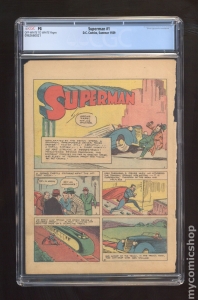 Superman #1 – Page 24 only, DC Comics, Supper 1939, designated PG by CGC sold for $405 on eBay recently.
Superman #1 – Page 24 only, DC Comics, Supper 1939, designated PG by CGC sold for $405 on eBay recently.
I’ve been asked to buy single pages of big book a lot recently, apparently it’s quite the trend. To date I’ve stayed away only because I’m not so sure of this market. A friend told me to look up Superman #1 on the GPAnalysis site. I was floored to see just how much activity there is on these pages and even more amazed at the prices they were getting.
Superman #1, page #24 sold on eBay recently for $405.
I’m not sure what m stance is on these things, I’ve seem key pager from books like Action #1 go for multiple 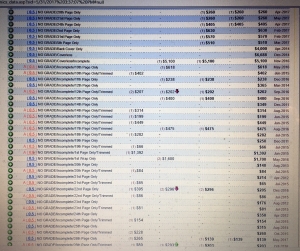 thousands of dollars.
thousands of dollars.
I know it’s impossible for most of us to own an Action #1 or a Superman #1 and pretty soon maybe even an Amazing Fantasy #15. But will having a page from the book suffice? Maybe it it’s one of the key pages.
I find it interesting that people are taking books apart (I’m assuming incomplete ones to begin with) and submitting them as separate pages for grading obviously thinking they will make more money when all is said and done.
Again, I’m trying to figure out where these pages belong in our collecting world, what utility of ownership do they satisfy and is this a growing trend where prices will increase over time?
Advantage Seller

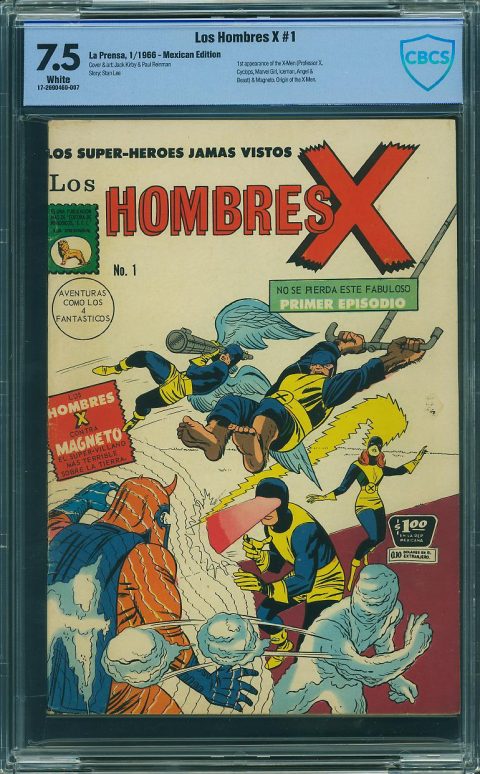
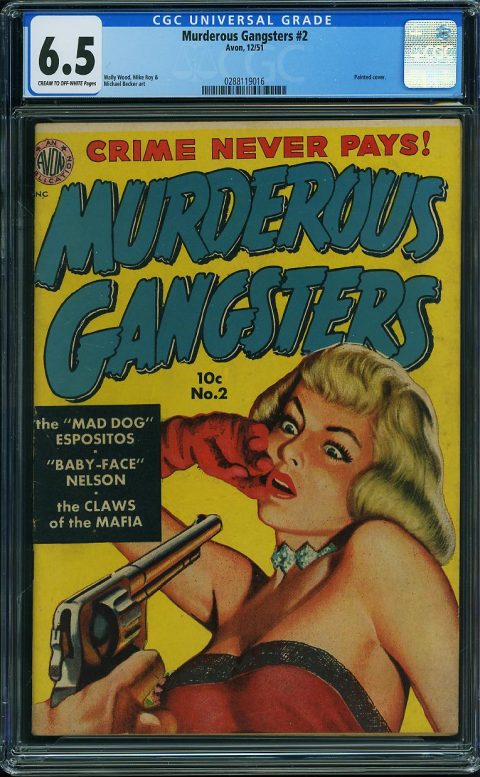
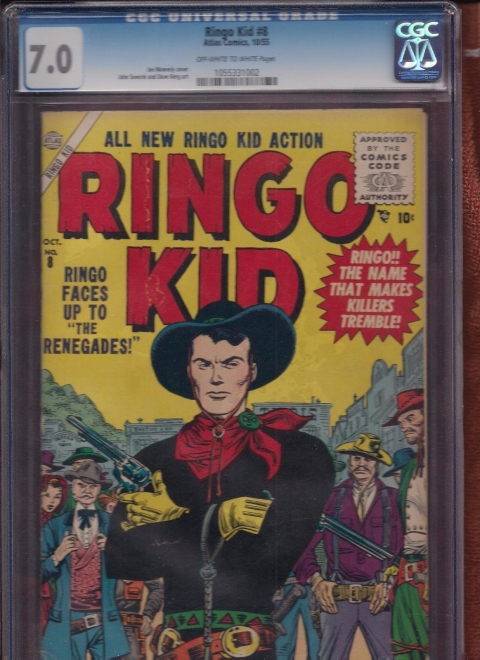
Gee Walt, I know a guy who recently acquired a damaged copy of Comic Magazine from the ’30s, and he didn’t have any qualms about tearing out a couple of pages of Seigel and Schuster and selling them singly. I don’t know what happened to the rest of the magazine though, unless he sold that for what he would have made off a damaged copy anyway and then made money off each of the pages. Sounds like a good strategy to me..
cheers, mel
Hey Mel, thanks for reminding me. I totally forgot to mention my abortive attempt at playing this game.
I was in halves with a guy on those Superman prototype pages and he really pushed for getting the pages graded separately. We ended up trading them away as we were getting very little interest when we posted them for sale online.
It is hard to say regarding seperate pages of a book.I have some Newspaper pages from the Sunday paper in 1939 and 1940 of Superman comic strips.I picked up 3 pages two years ago and gave a framed page each to my daughters for Christmas and kept one for myself.They are an interesting piece of history you don’t see every day and they cost me about $100 each.So these pages would have been from the first year of Superman and they were quite reasonable.I guess it totally depends on whether there is a market for it out there.Someone seems to be buying them.
Well, to be honest, I can think of a lot better things to spend $1500 on than a couple of pages torn out of a magazine. Just as a for instance, I recently picked up the first F.E. Howard Super Comics for exactly that price.
I noticed there is one listing on eBay, page 16 of All Star #8. The last panel on the page features Starman, but at $355 US a can’t picture them getting too many bites.
It will be interesting to see how this particular branch of collecting pans out in the long run.
cheers, mel
I would happily buy a page from action 1 if it was supple and had superman on it. Same for Tec 27. The last few action 1 pages I’ve seen were brittle.
It’s normal practice for antiquarian booksellers to pull old books apart to get at the desirable illustrations inside to be sold individually. I would predict this will happen with comics, not just pages from the super-rare ones but also comics with classic single pages, e.g. the splash page of Strange Tales #89. It all depends on the prices – if the image is worth more than the book, the book will get destroyed. Very sad in my opinion.
The only way to stop this would be for the grading companies to refuse to grade single pages, of course. But it’s a bonanza for them if people start wanting 52 things graded instead of 1!
Simon
As a former bookstore manager and a lifelong paper freak, I have sen this tearing a good deal, although we never did it ourselves. If a book was defective it went into the recycling bin. We did have one regular customer who sold at flea markets and picked up a lot of our old magazines just to tear out old lithographs, car ads, Coke ads and pictures of sports stars and celebrities. Personally, I hate to see books dismantled in this fashion, but it’s definitely not a new trend in antiquarian books and magazines.
The problem with dismantling a comic book page by page is that all of the surrounding context is lost. I think of these books as cultural touchstones to a previous era and I would rather have a defective copy than a slice.
cheers, mel
This is an extremely interesting thread. I had read in the past that antiquarian book collectors/sellers were baffled by some of the valuation approaches of comic collectors, for example the steep discounts accorded to professionally restored comics. It seems that this trend is leading to more of a crossover.
The attraction of having the actual book, in my mind, is that it is a link back through all of the previous holders of this book to its original newsstand appearance, and the meaning of that appearance in the history of comics and culture. So maybe like having an antique piece of furniture that has been in use since it was built, as a functional link to the evolution of culture. Having a page is more like having a relic – its function has been completely lost, and it provides a more basic physical link to the past. I think for the “true” comic collector these single pages take on the same role as relics, which is why there is only interest in the cases of the most iconic, out-of-reach books.
I think the concept is similar for thinking about original art versus comic books. It is generally unlikely, but possible, that a page of original art from a book will sell for less than the book, even though the book is a mass-produced copy. The value of the book is not its originality (clearly), not necessarily in its relative rarity (all original art is unique), but in the link to the cultural significance. Kids were reading/trading/collecting the books, not the original art. Similarly they weren’t handling single pages, so collecting in this form somewhat breaks the cultural link.
Great analysis, Chris. I think you perfectly described this strain of collecting/investing.